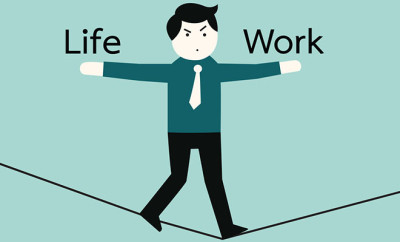
What Constitutes Clean Language?
I was recently asked “What constitutes Clean Language?”. A fairly straightforward question you might think until you go into it more deeply. It is an interesting question because the ways people have used the term “Clean Language” have proliferated since David Grove coined it in the early 1980s.
The obvious answer is that Clean Language consists of the set of clean questions and the delivery method devised by David Grove. Although it evolved considerably in its first 15 years, Clean Language has stabilised in the following 15 years. Penny Tompkins and I published our first description in 1997 and we reviewed changes in the way we categorised the questions in 2004.
What is and what is not ‘clean’ cannot be rigidly defined. Phil Swallow and Wendy Sullivan have referred to this variability as a “clean continuum”. Since working with Caitlin Walker training police interviewers in 2002 we’ve noticed that what constitutes a clean question varies with each application area. For example a police officer investigating a car accident is entitled to cleanly ask “Who was driving the car?” or “What time did the incident occur?” since these can be presupposed in the physical world. They would not be clean if the accident occurred in someone’s metaphor landscape. We therefore use the term contextually clean to distinguish variations from David Grove’s original application of Clean Language to psychotherapy.
In the last 10 or so years the pace of innovation involving clean approaches has been accelerating. David Grove introduced Clean Space and Emergent Knowledge. We introduced A Framework for Change and Symbolic Modelling Lite; and Clean Language has been incorporated into or combined with dozens of other practices and applications. A list of clean methodologies I can think of (in approximate date order and with originator given in brackets) includes:
Healing the Wounded Child Within (Grove)
Metaphor Therapy (Grove)
Intergenerational Healing (Grove)
Symbolic Modelling (Lawley & Tompkins)
Metaphors at Work (Walker)
Clean Space (Grove)
A Framework for Change (Lawley & Tompkins)
Emergent Knowledge e.g. Power of 6 (Grove; elaborated by Harland, Hudson, Saunders, Wilson)
Systemic Modelling (Walker)
Modelling Shared Reality (Ouboter; elaborated by Lawley, Nieuwland, Nooitgedagt, van Helsdingen)
One-Minute Motivation (Way, Swallow & Sullivan)
Symbolic Modelling Lite (Lawley & Tompkins)
The Five-Minute Coach (Cooper & Castellino)
In order to understand how Clean Language relates to these methodologies, a wider frame is needed. To make the necessary distinctions I like to make use of ‘levels’ (what a surprise!); three in fact:

In 1998 David Grove defined his Philosophy and Principles of Clean Language. These principles do not look anything like his clean questions. And nor do the Principles of Symbolic Modelling we summarise at the end of Chapter 2 of Metaphors in Mind (pp. 45-47). This is because ‘a philosophy’ is the overarching principles and assumptions about how to use a method within the framework of a chosen methodology.
Recognising the difference between these levels is fairly easy:
A method involves behaviours you can see and hear moment by moment.
A methodology is a process that takes place over time. It involves a number of stages/phases which when taken together make up a coherent approach.
A philosophy is an abstract set of notions and principles that guide the practitioner in a general way, especially in new situations.
Consider how long it takes to become competent at using each level. People can get good at using Clean Language with a few days training and lots of practice. It takes (a lot) more time and effort to get good at using one of the clean methodologies. And it usually takes several years to get a clean philosophy fully in the muscle and be able to create new methodologies and work in new contexts.
The levels model also makes clear that it is possible to use Clean Language with other-than-clean methodologies, and conversely to use non-clean questions within a clean methodology. However if a method and methodology are not aligned with a clean philosophy then whatever happens, it is probably not clean.
That leads me to another point. The word ‘clean’ started as a metaphor and is more and more being used as a metonymy – a part that stands for the whole. In this sense ‘clean’ has become a title or generic name for the whole field. I’m ok with this and it is a good example of how language evolves through usage. However conflating levels by calling any of the growing number of methodologies “Clean Language” doesn’t help. I’d call this a Batesonian logical-typing error. Clean Language exists as behaviours which can be observed and described directly. She said this, he did that. A methodology is more abstract. It is a how-to process that needs be suited to a context, which is why I don’t think it should be called “Clean Language”. For example we refer to Symbolic Modelling as “using the Clean Language of David Grove”.
To conclude, Penny and I summarised the function and components of Clean Language in two pages of Metaphors in Mind (pp. 282-283). While this summary may not be the be-all and end-all of what constitutes Clean Language, it still specifies the core of the method. I therefore think that a person needs to be using either a substantial amount of that core, or a substantial part of what they do needs to involve a subset (e.g. One-Minute Motivation uses just four questions, three of which come from classic Clean Language), before they can legitimately say they are “using Clean Language”. Just asking one or two clean questions in the middle of whatever else they do would not, in my opinion, be enough. To avoid confusion and remain respectful to David Grove I’d suggest they call what they are doing something other than Clean Language.
References
1 Less is More … The Art of Clean Language, Penny Tompkins and James Lawley, Rapport 35, February 1997. cleanlanguage.co.uk/articles/articles/109/
Clean Language Revisited: The evolution of a model, James Lawley and Penny Tompkins, Rapport, Autumn 2004. cleanlanguage.co.uk/articles/articles/28/
2 Whose map is it anyway? Phil Swallow and Wendy Sullivan, Proceedings of the Integral NLP Conference, 2004 and The Model, Jan 2007. cleanlanguage.co.uk/articles/articles/88/
3 Clean Conversations: Remaining Clean-ish in everyday settings, Penny Tompkins and James Lawley (2005) cleanlanguage.co.uk/articles/articles/249/
4 For an overview of the relationship between Clean Language, Clean Space and Emergent Knowledge see: Joining up the work of David Grove, James Lawley, Acuity, Vol.2, No.1, April 2011. cleanlanguage.co.uk/articles/articles/222/
For individual articles see: cleanlanguage.co.uk/articles/categories/Clean-Space-%26-Emergence/
5 These three levels draw heavily on to Robert Dilts’ Neurological Levels model, Encyclopedia of Systemic NLP and NLP New Coding, Robert Dilts and Judith DeLozier, 2000, pp. 866-868 nlpuniversitypress.com/html2/N32.html and John McWhirter’s Fractal Modelling, see Re-Modelling NLP – Part One: Models and Modelling, Rapport, November 1998. ensorysystems.co.uk/sst/dbmremodellednlp/part-one-models-and-modelling/
6 The Philosophy and Principles of Clean Language (1998) cleanlanguage.co.uk/articles/articles/38/ are a snapshot of David Grove’s views at the time. Notice how much his philosophy and principles had evolved in the ten years since the publication of Resolving Traumatic Memories: Metaphors and Symbols in Psychotherapy, David J Grove & Basil Panzer (Irvington, 1989).
7 Metaphors in Mind: Transformation through Symbolic Modelling, James Lawley & Penny Tompkins (2000). The Clean Language summary pages of have subsequently been translated into a dozen languages at: cleanlanguage.co.uk/articles/categories/Worldwide
8 Wendy Sullivan and Judy Rees, Clean Language: Revealing Metaphors and Opening Minds (2008), were among the leaders in making the term ‘clean’ popular.
First published at www.cleanlanguage.co.uk







